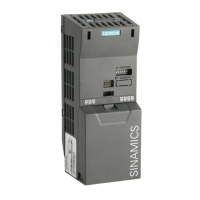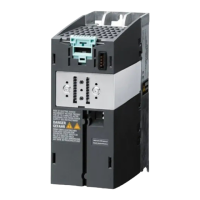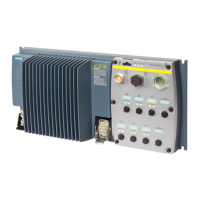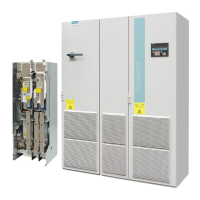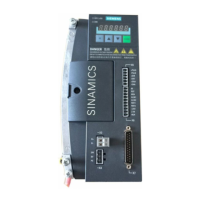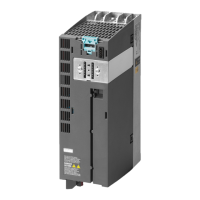Functions
5.11 Operation in fieldbus systems
Frequency inverter
178 Operating Instructions, 08.10. 2008, t.b.d.
Parameter ID (PKE), first word
The parameter ID (PKE) is always a 16 bit value.
3.(
,1'
3:(
$.
318
630
VW
ZRUG
3DUDPHWHUFKDQQHO
QG
ZRUG
UG
DQG
WK
ZRUG
Figure 5-31 PKE structure
● Bits 0 to 10 (PNU) contain the rest of the parameter number (value range 1 to 61999).
An offset must be added, which is defined by IND with the upper bits (acyclic) or the lower
bits (cyclic) of the byte, for parameter numbers ≥ 2000.
● Bit 11 (SPM) is reserved and is always 0
● Bits 12 to 15 (AK) contain the request or response ID
The meaning of the request ID for request message frames (master → converter) is
explained in the following table.
Table 5- 60 Request ID (master → converter)
Response
ID
Request
ID
Description
positive negative
0 No request 0 7 / 8
1 Request parameter value 1 / 2 ↑
2 Change parameter value (word) 1 |
3 Change parameter value (double word) 2 |
4 Request descriptive element
1)
3 |
6 Request parameter value (field)
1)
4 / 5 |
7 Change parameter value (field, word)
1)
4 |
8 Change parameter value (field, double word)
1)
5 |
9 Request number of field elements 6 |
11 Change parameter value (field, double word) and save in EEPROM
2)
5 |
12 Change parameter value (field, word) and save in EEPROM
2)
4 |
13 Change parameter value (double word) and save in EEPROM 2 ↓
14 Change parameter value (word) and save in EEPROM 1 7 / 8
1) The required element of the parameter description is specified in IND (second word).
2) The required element of the indexed parameter is specified in IND (second word).

